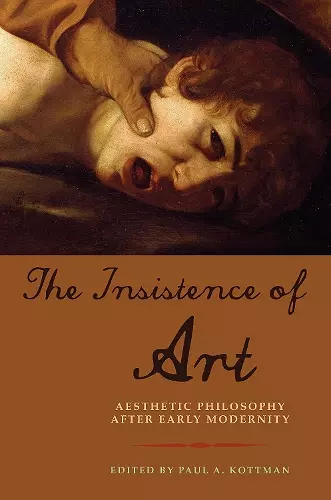The Insistence of Art
Aesthetic Philosophy after Early Modernity
Format:Paperback
Publisher:Fordham University Press
Published:3rd Apr '17
Currently unavailable, and unfortunately no date known when it will be back

Philosophers working on aesthetics have paid considerable attention to art and artists of the early modern period. Yet early modern artistic practices scarcely figure in recent work on the emergence of aesthetics as a branch of philosophy over the course the eighteenth century. This book addresses that gap, elaborating the extent to which artworks and practices of the fifteenth through the eighteenth centuries were accompanied by an immense range of discussions about the arts and their relation to one another.
Rather than take art as a stand-in for or reflection of some other historical event or social phenomenon, this book treats art as a phenomenon in itself. The contributors suggest ways in which artworks and practices of the early modern period make aesthetic experience central to philosophical reflection, while also showing art’s need for philosophy.
"This collection on early modern aesthetics of doesn't just fill a gap: In its emphatic refusal to cordon off the Renaissance, and in its conviction that art is no passive mirror but a 'matrix through which social reality is established,' it is a welcome corrective. Dante and Ficino, Donne and Shakespeare, Bellori and Caravaggio, Goya and Pater-with Herder, Hegel, Paul de Man and Kierkeegard making memorable cameos-populate an early modernity that looks ahead to modernism." -- -Andrei Pop University of Chicago "A superb and timely collection-rigorous wide-ranging essays demonstrating some of the most compelling trends in their respective fields. It's the sort of collection that gives substance and urgency to interdisciplinary thinking." -- -Christopher Pye Williams College
ISBN: 9780823275809
Dimensions: unknown
Weight: unknown
304 pages